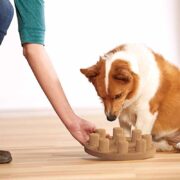Have you ever asked yourself, why is my dog’s poop white? If you’re like most dog owners, your furry canine friend is an important part of the family. As such, you’re always looking out for any indication that your best pal’s health might not be up to snuff.
One of the most important indicators of Fido’s health is not necessarily one of your favorite parts of pet ownership, but your dog’s poop will often give you the scoop on his overall health.
Read on for a healthy dog poop chart and information that will reveal exactly what your dog’s poo is telling you.
What’s the Scoop on Poop Color?

Like it or not, your dog’s stool is an important indicator of his health. Healthy poop colors for your puppy pal can range from golden brown to a darker color of mahogany. There’s normal variation depending on the ingredients in the dog food you’re feeding.
It can be quite unnerving to be doing your poop-scooping doody and see white stools instead of the usual color and texture. Of course, you want to know what exactly it means for your pet’s health. Scroll to the bottom for a convenient healthy dog poop chart infographic you can reference.
For a more detailed look, here’s the rundown on variations of white dog poop and what they mean.
White Poop, Grey Poop, or White Specks in Your Pet’s Poop

As you likely know, the color of Fido’s feces is related to your dog’s diet, and there are many things, including cicadas and other “yard snacks,” that can upset his digestive system. In fact, there are a few reasons your furry friend might have bowel movements that produce white stools.
Why is my dog’s poop white? Regardless of the reason, it’s important to know that white poop is never normal. It might not be a serious problem, but it’s not normal.
Here are a few reasons Fido’s poop could be white or grey.
Why Is My Dog’s Poop White and Chalky? — A Diet High in Calcium
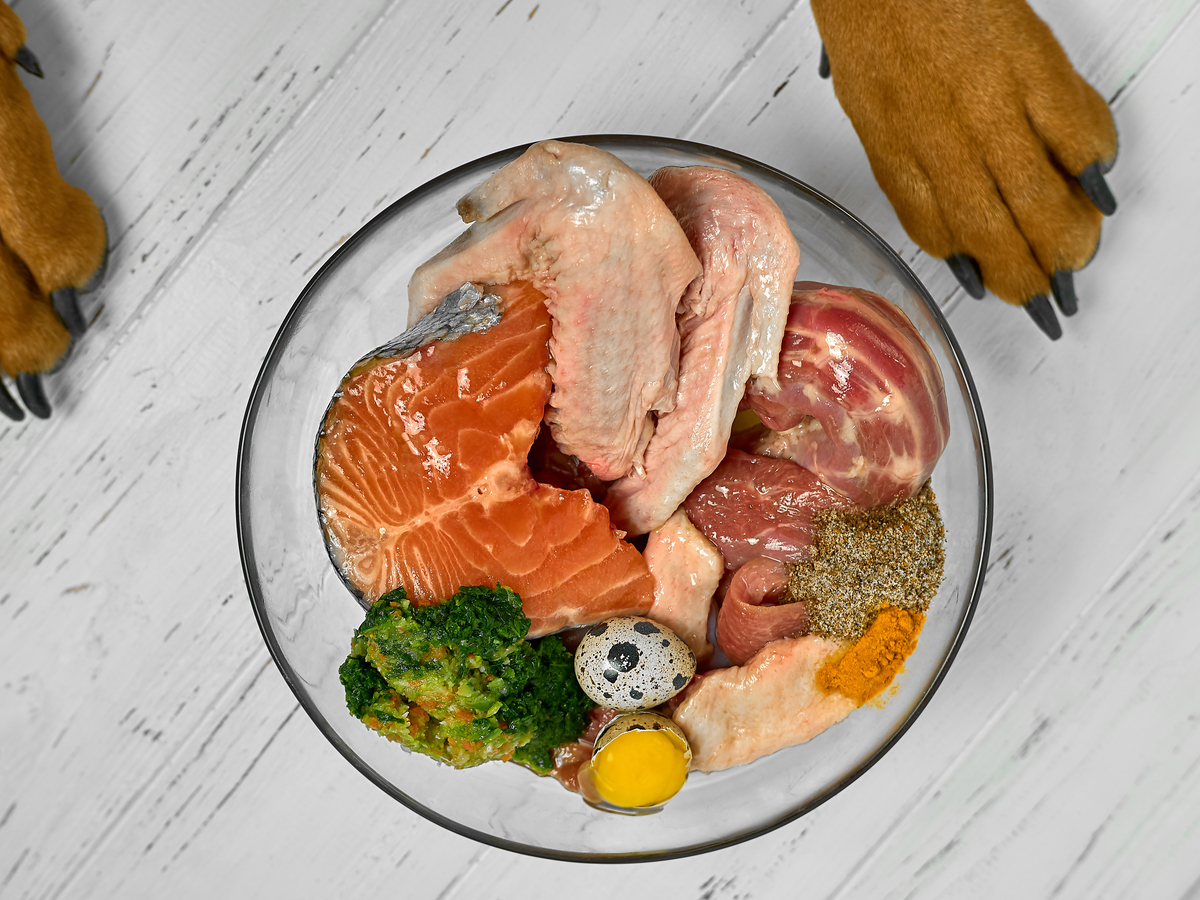
White, chalky poop often indicates you’re feeding your dog a diet too high in calcium. This is easy to do if you’re feeding him a raw food diet or giving him too much bone with his food.
Diets high in calcium can cause light-colored or white poop that is chalky in consistency and typically harder than your dog’s normal stool. The problem with too much calcium is that it can cause constipation in your pup pal.
That means more water is reabsorbed from the fecal matter as it passes through his gastrointestinal tract, and that causes his poop to be hard and lighter in color or even white.
If you suspect this is the cause of your dog’s hard, white, chalky poop, then you might want to switch your dog’s kibble to a commercial brand and consult with your vet about a good way to change his diet. It’s also important to watch what kind of human food you’re giving him.
White Specks — Tapeworms
White specks are a different story. If you’re seeing either white specks, white spots, or strings in Fido’s fecal matter, this could mean he’s got a bad case of tapeworms. Tapeworms shed their eggs in your dog’s poop and these are visible to the naked eye.
Many pet owners describe tapeworm eggs as appearing like grains of rice. The worm itself usually stays inside of your dog’s body so you’re not as likely to see that, but if he has a severe infestation, it is possible. The worm would appear as a long, white string, but if you’re seeing that, it could also be an indication of other intestinal parasites such as roundworms.
Typically, parasitic infestations will also cause your dog to have loose stool or an upset stomach. The presence of some kinds of worms in his digestive system can also cause red streaks in his feces and can also significantly affect your dog’s health.
If you see any of these in your dog’s feces, you want to call your veterinarian and schedule an appointment to check a stool sample and get him dewormed. It will also be critical to decontaminate your yard so he doesn’t get reinfested.
White or Grey Poop — Internal Illness
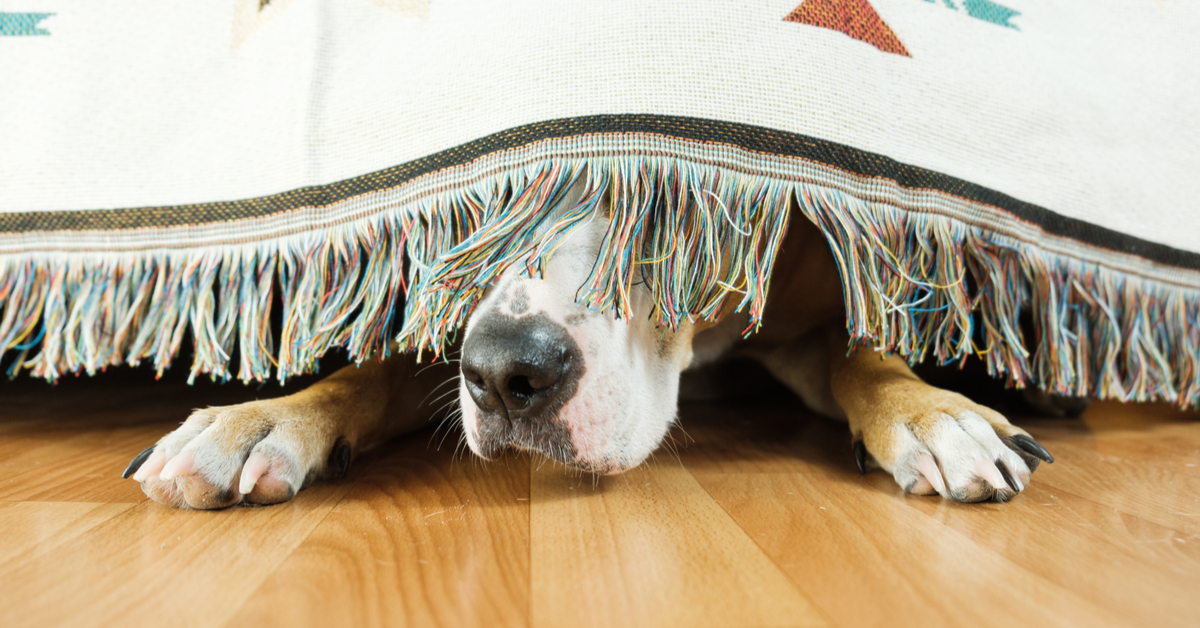
Internal illness is not as common of a problem, but it is something that can turn your dog’s feces white or light grey in color. It can signal that there’s a problem with his digestive system.
Normally, as food passes out of the stomach and into the small intestines, your dog’s liver adds bile which is a green-colored material that actually then turns the poop brown in color. The bile is moved from the liver into the digestive tract via the gallbladder.
If the liver is not producing bile for some reason or if your dog’s gallbladder isn’t properly transporting the bile into the intestinal tract, then your dog’s poop can be white or light grey in color. Bile is essential for proper digestion, and a problem like this can quickly become serious.
The pancreas is also responsible for producing digestive enzymes, including insulin, that are vital for proper digestion. If it’s not working correctly, that is called exocrine pancreatic insufficiency which can also become a big problem quickly.
Because of the serious and potentially life-threatening nature of these digestive problems, it’s important to check with your vet if your dog’s poop is white or light grey in color.
Important Tip: You might also see mucus or a greasy appearance to your dog’s poop with these kinds of digestive problems. This can add to the light color of the poop which can also sometimes contain blood.
Old, White Poop — No Problem!
Why is my dog’s poop white in my yard?
If you’re seeing old, white poop in the yard, that’s due to the normal breakdown of the color pigments after being exposed to environmental factors. It’s completely normal and doesn’t indicate any health problems for your best bud!
What Should You Do If You See White Poop Color?
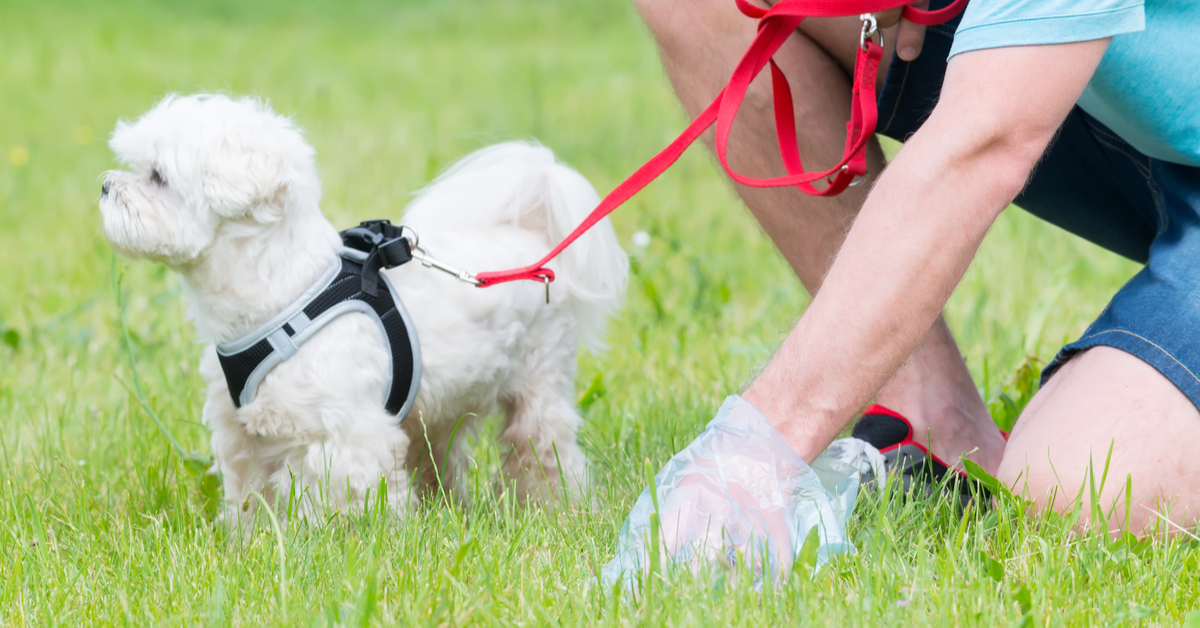
Before you take any action, you want to first be sure you’re not just seeing old poop. If you’re certain the white poop is coming from your canine friend, then here are some practical steps to take:
Rule #1: Don’t panic. Take a closer look.
The first thing you want to do is take a closer look. Well, it might not be correct to say you want to do that, but your four-legged friend is a family member, so buck up and look closer.
It’s also a good idea to collect a sample so you can show your vet if you decide it requires an appointment. The sample should be fresh, and you can collect it with paper towels and put it in a plastic container like an old pill bottle to help keep it from drying out.
Is Your Pal Showing Any Other Symptoms?
The next thing to think about is if you are seeing any other symptoms in your dog. Is he showing evidence of food intolerance? Is he scooting? (This could indicate issues with his anal glands.) Does he appear to be having trouble pooping? Is he eating like he normally does? Is there mucus or blood in his poop? If he is showing other symptoms, it’s time to call the vet.
Do you see white specks or strings in the poop?
If so, it’s time for a good deworming. It’s not a huge problem, but it is one that needs to be addressed, and that sample will be important to carry along to confirm the diagnosis.
Is it chalky in consistency?
That could indicate you just need to make some dietary changes, but it’s always a good idea to consult with your vet on the best way to do that. They may have some specific dietary recommendations.
What Does Your Dog Poop Look Like?
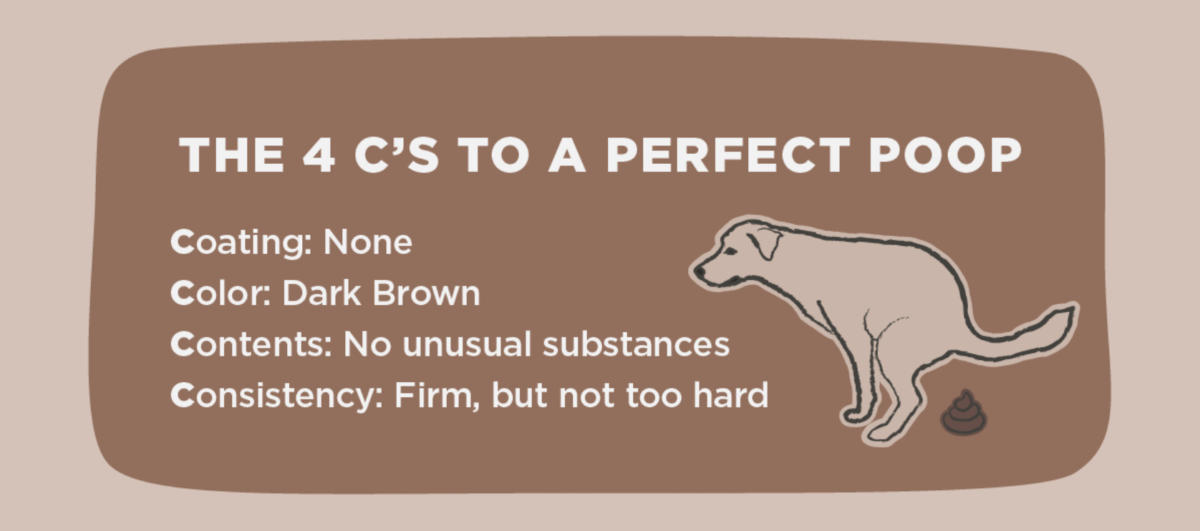
When checking out your dog’s poop, it might help to know a little more about what indicates that it’s healthy. Specifically, you want to think about the four Cs: color, consistency, content, and coating.
Color

As mentioned above, you want your dog’s feces to be golden brown to dark mahogany or chocolate brown color. There can be some variation, but it should always be brown. We’ve discussed what white poop might mean, but what about other colors that indicate a problem with your pup’s digestive system?
Black Poop
This can be a sign of a serious health problem as it can indicate bleeding high in the gastrointestinal tract. That’s something you want to get checked out right away.
Green Poop
This might just mean your pooch is eating some grass, but it could also mean that he’s got some parasites or even something more serious like that he’s gotten ahold of some rat poisoning. It’s definitely worth taking a stool sample and checking with your vet.
Orange Poop
Sometimes this just means that the food has passed too quickly through your dog’s digestive tract, but it can also mean he’s got a problem with his liver, gallbladder, or bile ducts. It’s worth checking with the vet to be sure.
Yellow Poop
This could mean your furry friend ate something that disagrees with him and he has an upset stomach, but it could also mean something more serious like gallbladder, pancreas, or liver issues.
Purple or Pink Poop
Yeah, you read that right, but it doesn’t mean that your pal is into Punk Rock. Instead, it can be a sign of a serious health problem known as hemorrhagic gastroenteritis. Health issues like this can be caused by parasites, a problem with his immune system, or from eating something that isn’t food. It’s definitely something you want to get checked out.
Consistency
Would you believe there’s a scale to measure consistency? There is, and it goes from 1, which means rock hard, to 7, which means diarrhea. Ideally, you want your dog’s poo to be firm and segmented kind of like a caterpillar. This would be around a 2 on the consistency scale. If you were to squeeze it, it would feel a little like Play-Doh.
Content
You might not see everything that can be hidden in your dog’s feces, but if you see something like a foreign object, that’s definitely not normal. That means he’s eaten something he shouldn’t have.
As we’ve already discussed, you also don’t want to see white specks, white spots, or white strings as those can indicate a parasitic infestation. You also don’t want to see large clumps of fur. This can indicate overgrooming because of problems like allergies or anxiety.
Coating
Your dog’s poop normally shouldn’t have any coating on it, but if you see a film left behind on the grass after picking it up, that can indicate he’s got some inflammation in his large intestines. If it’s a one-time thing, it might just indicate he ate something that didn’t go down well, but if you see it on more than one occasion or it is accompanied by other symptoms, you should get him checked out with your veterinarian.

Healthy Dog Poop Chart
If you’re having trouble discerning the state of your dog’s poop, study the healthy dog poop chart infographic below.
Again, if you’re seeing white dog poo, it’s not a normal situation. In rare cases, it can indicate a possibly life-threatening problem. In most cases, it may just indicate it’s time to get him dewormed or change his diet.
It’s never a bad idea to consult your vet, but if it just happens once and there are no other symptoms, it may just indicate your dog ate something he had a little trouble digesting. Doesn’t that happen to us all every now and again?
Feel free to reference this healthy dog poop chart when your dog’s stool doesn’t look like it should. Let us know in the comments if you’ve ever encountered this problem and what you did to help get your furry friend’s health back on track!


